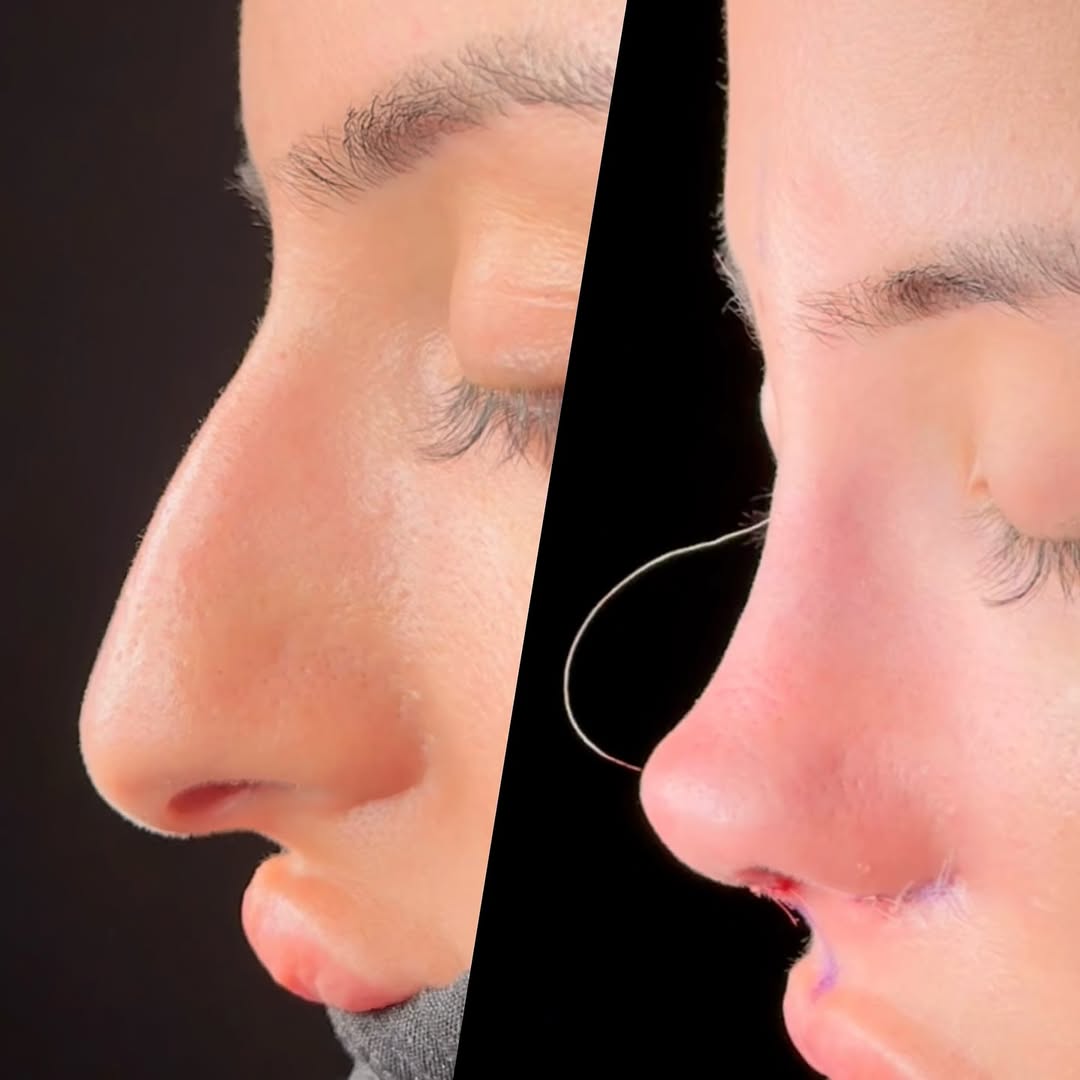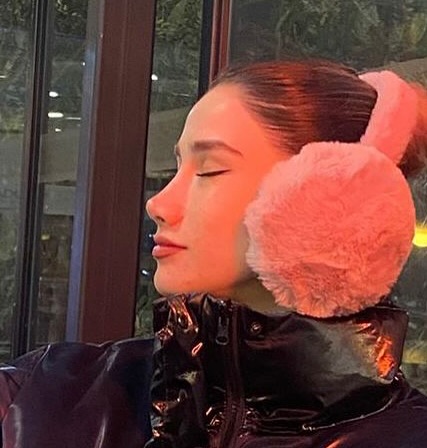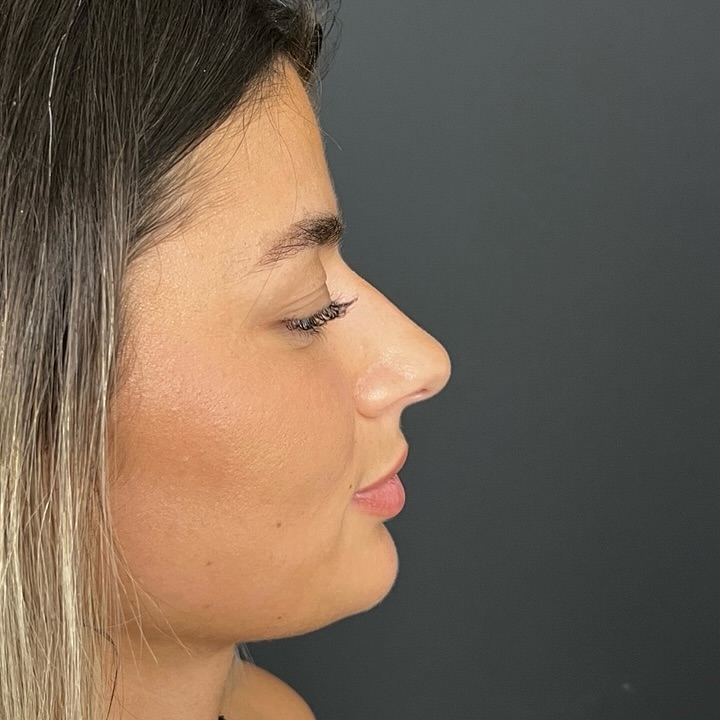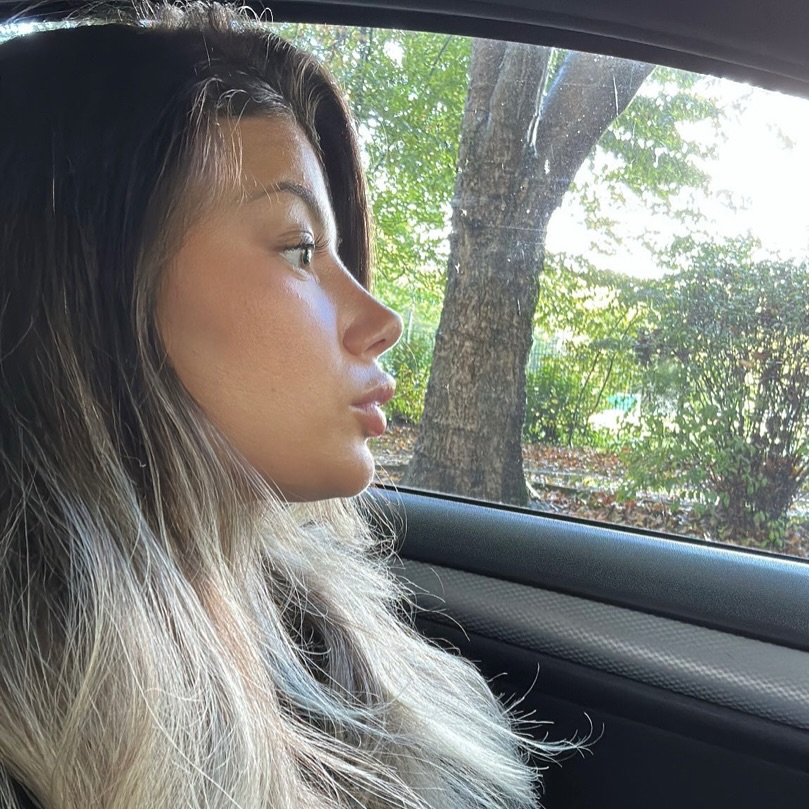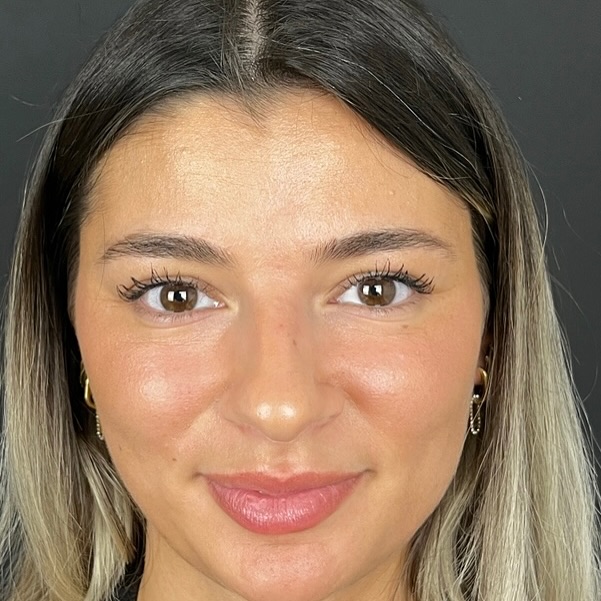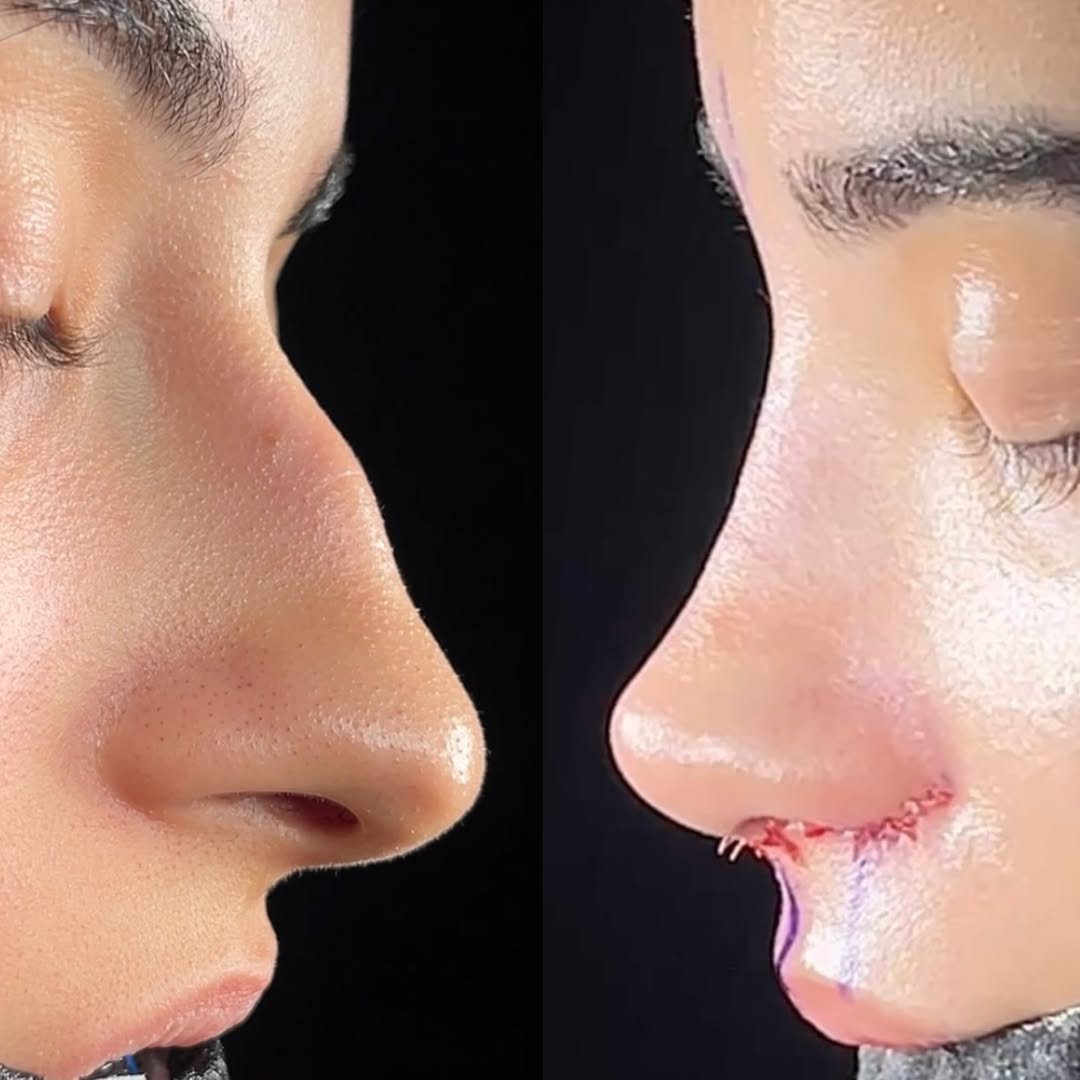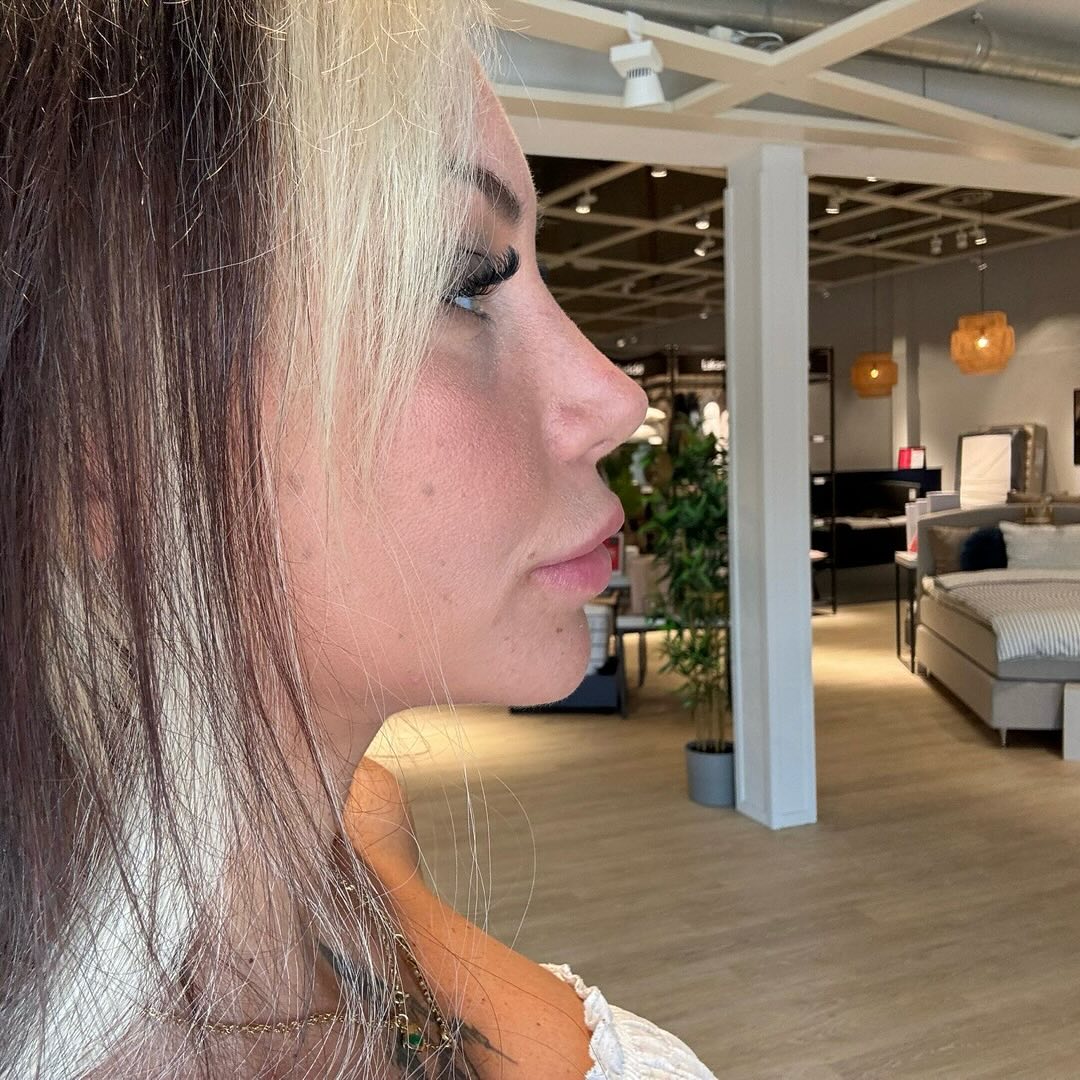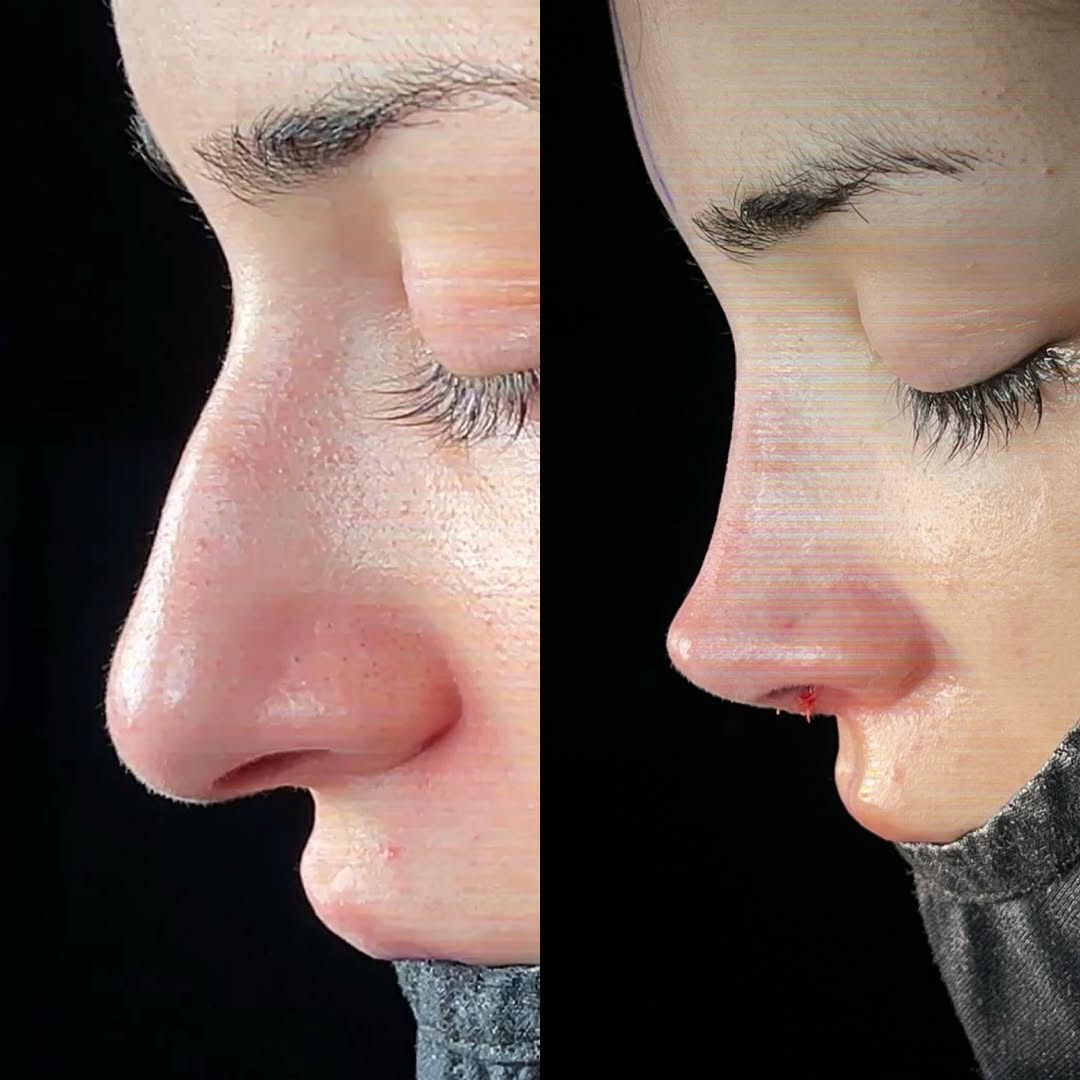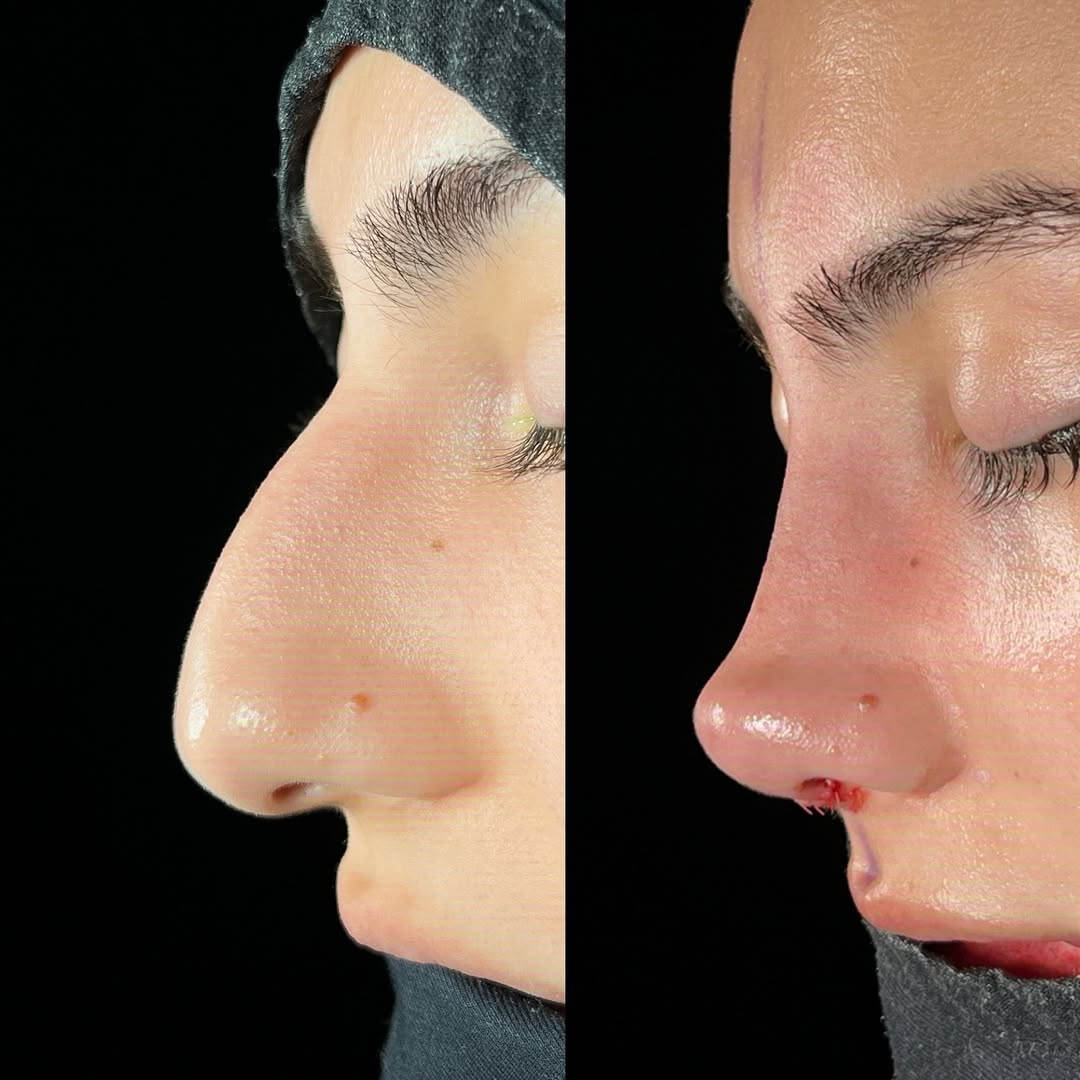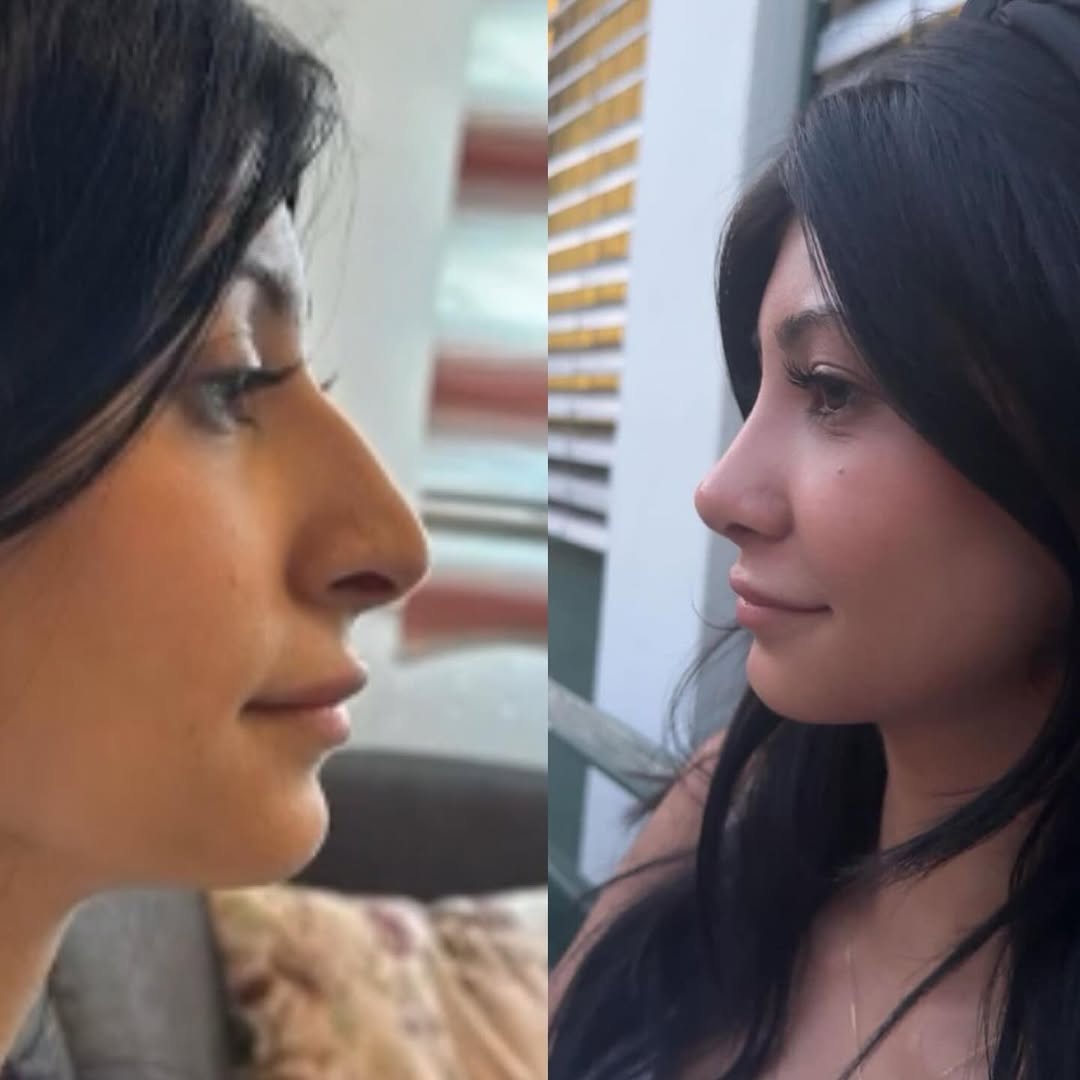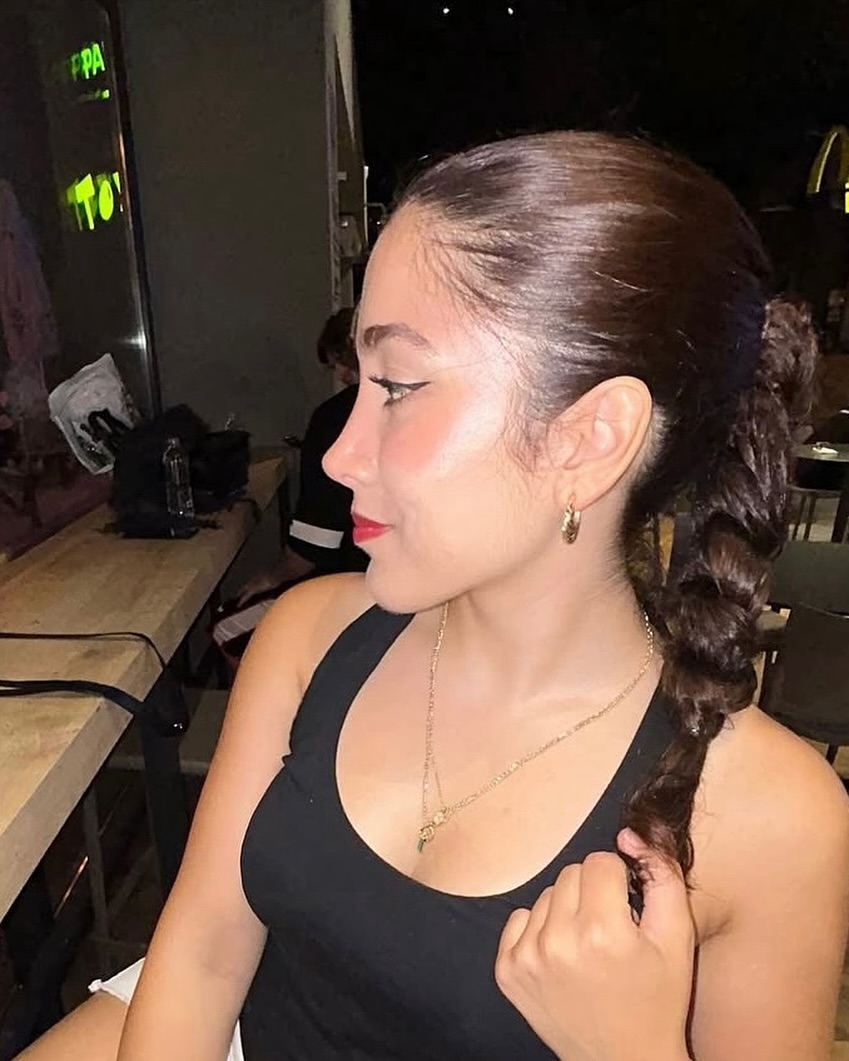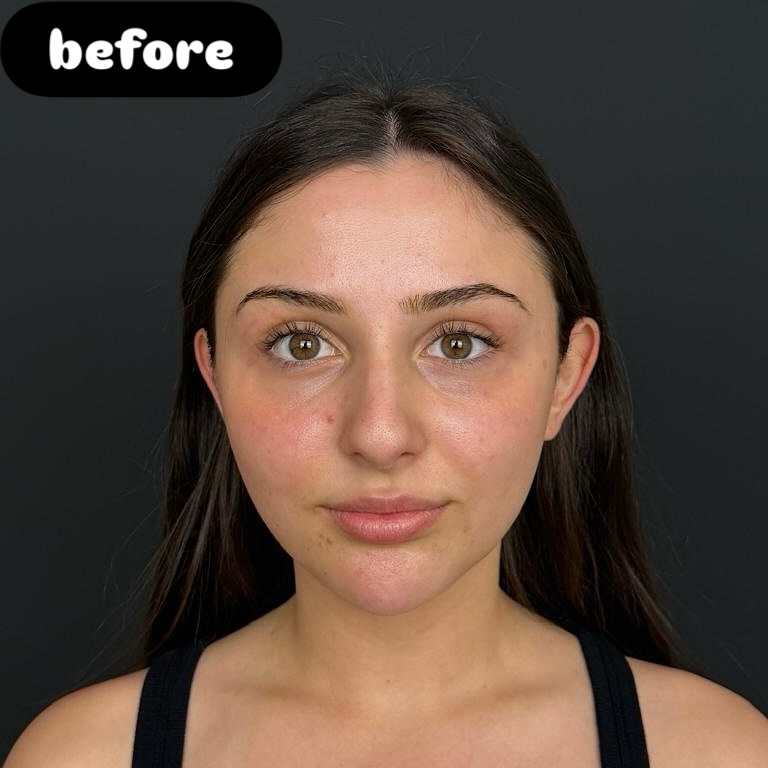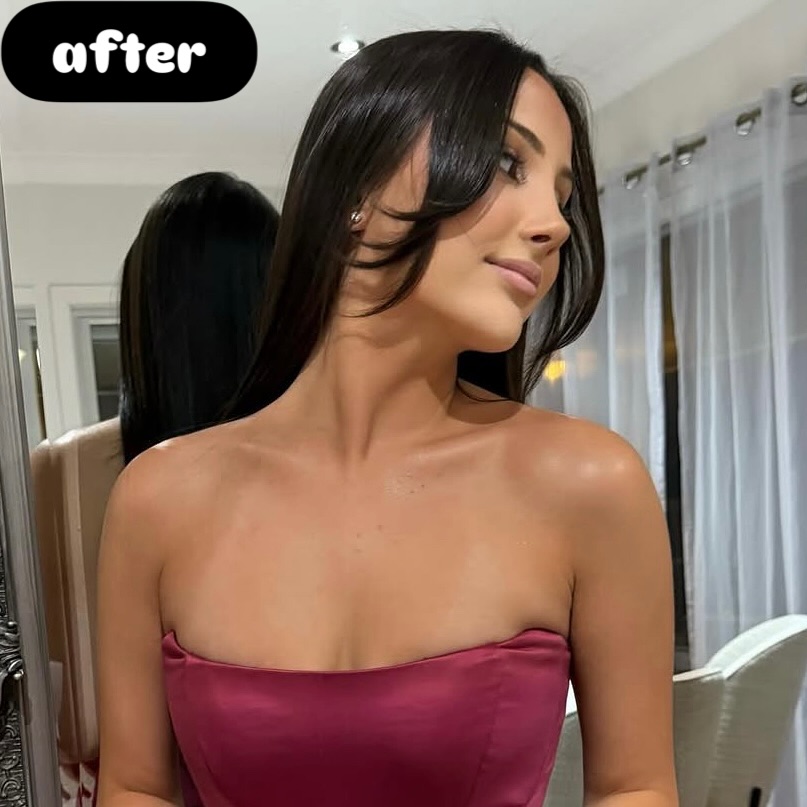What is the Barbie Nose?
The Barbie nose is a small, straight, thin, and upturned shape of the nose achieved through cosmetic nose surgery-rhinoplasty. It takes its name from the characteristic nose of the Barbie doll and represents an idealised aesthetic pursuit rather than realism. Essentially, it aims for a ‘perfect’ and ‘doll-like’ aesthetic rather than a natural and personalised appearance.
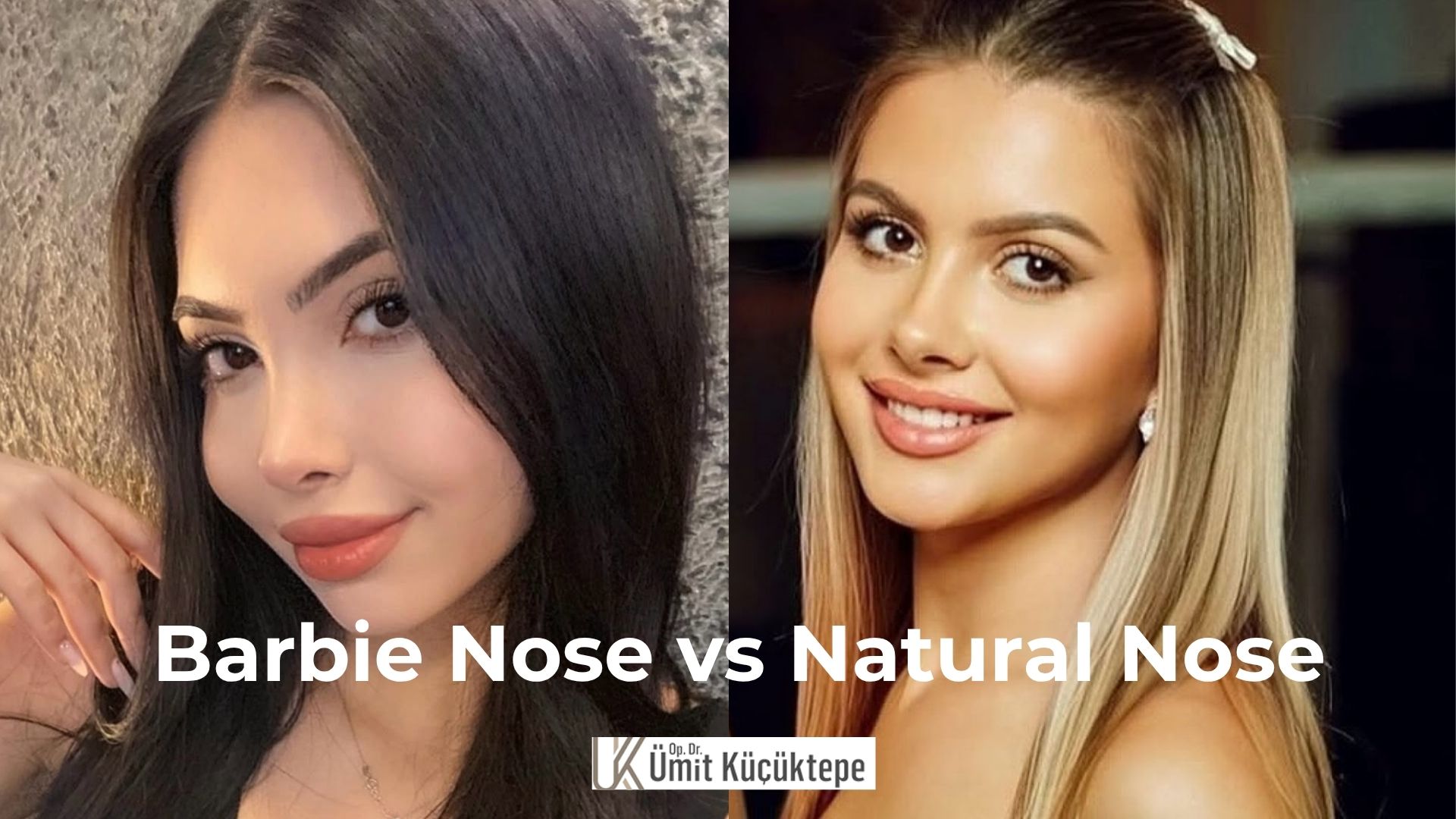
This style has become popular lately in certain regions, namely those of the Middle East, Eastern Europe, and Asia, influenced especially by social media. It is further known as a "raised nose" or a "doll-like nose".
Characteristics of Barbie Nose
Indeed, there are quite specific characteristics that make the aesthetic of a Barbie nose unique and distinct from other techniques of rhinoplasty:
Over-rotated nasal tip:
The nose is over-elevated in the tip above aesthetic measurements, generally more than 110-115 degrees. This leads to a situation described as ‘nostril show’, which consists of seeing the nostrils quite clearly when looking at a patient straight on. This is the most characteristic feature of the style.
Sharp straight dorsum:
No natural bone curve or slight curvature is left in the bridge of the nose; it is completely flattened and usually made into a very thin, sharp line. The slight dorsal bone, so common in natural noses, is definitely not desired here.
Over-refined tip:
In most cases, nasal tip cartilages are narrowed and thinned as much as possible. This often makes the nose appear much smaller and more delicate than it is, sometimes even out of proportion to the rest of the face.
Pronounced supratip break:
A sharp angle is created where the nasal bridge stops and where the nasal tip starts. This break reinforces the ‘upward-turned’ appearance of the nose.
Small nasofacial angle:
There is a remarkable reduction in the angle between the nose and the upper lip, which makes the nasal tip appear more upturned.
What is Natural Rhinoplasty?
Natural rhinoplasty represents the exact opposite of the philosophy and technique of the Barbie nose. The key concept is to obtain a functional and harmonious nose, not looking artificial, within the given anatomy and aesthetics unique to each face. In a word, the goal of natural rhinoplasty is not to change the person's nose completely and make it look 'artificial'; it is to ensure that the nose gets its most beautiful form and is in full harmony with the face. Changes are made subtly and in balance, without being obvious.
The surgeon maintains as much of the existing cartilage and bone structure as possible, just adjusting the problematic areas and making subtle adjustments that will not disrupt the balance of the face. The results will be based on a classic understanding of beauty that preserves identity and prioritises naturalness, which will not go out of style over time.
Characteristics of Natural Rhinoplasty
The characteristics of a natural rhinoplasty are as follows:
Absolute facial harmony:
The final shape of the nose is in perfect harmony with all facial features, such as the person's gender, ethnicity, cheekbone structure, jawline, and forehead width. It is not the nose itself but the balance it adds to the face that is paramount.
Preserved natural lines:
A slight bone prominence (dorsal hump) on the bridge of the nose, if characteristic and unique to the individual, can be preserved rather than completely removed or corrected to a milder form. The bridge line may not be straight but may have a slight natural curve.
Proportional and soft tip:
The tip of the nose is narrowed to be proportional to the face but is not excessively refined. The definition at the tip is not sharp but is achieved with soft transitions. Natural anatomical structures, such as a ‘bifid tip’ may not be completely eliminated.
Aesthetically rotated tip:
The tip of the nose is slightly raised within aesthetic guidelines (generally 95-110 degrees for women). The aim is not to create excessive ‘nostril show’ but to enhance the nose aesthetically.
Functional priority:
Breathing function is more important than aesthetic concerns. The internal nasal valves and septum structure are corrected or reinforced to improve breathing.
Preservation of character:
Small features that contribute to a person's facial expression and make them ‘them’ (e.g., the slight bridge in Cindy Crawford) can be consciously preserved.
Half Barbie Nose - Half Natural Nose
What is the Difference Between Barbie Nose and Natural Nose?
The differences between the two styles are not limited to surgical technique; they are fundamentally a difference in aesthetic philosophy and expected outcome.
|
Barbie Nose |
Natural Nose |
|
Core Philosophy: Applying an idealized, standard template. |
Personalized enhancement of the existing structure. |
|
Appearance: Conspicuous, "done", dramatic. |
Subtle, harmonious, "undetectable." |
|
Nasal Bridge: Absolute straightness, sharp lines. |
A slight natural curve or straightness can be preser-ved. |
|
Nasal Tip: Excessively upturned, very narrow and refined. |
Slightly upturned or straight, proportionate to the face. |
|
Nostril Show: Pronounced and intentional. |
Minimal or none. |
|
Facial Harmony: Can sometimes appear separate from the face, disproportionate. |
An integral and harmonious part of the face. |
|
Timelessness: Trend-focused, can become outdated. |
Classic, timeless, maintains a natural look with age. |
|
Patient Profile: Those seeking a radical change, who follow trends. |
Those seeking a subtle refi-nement, who value natural-ness. |
Barbie Nose & Natural Nose Job: Pros and Cons
Barbie Nose: Advantages and Disadvantages
Advantages:
- It offers a distinct and impressive result for patients expecting a radical change.
- It can create a striking profile for social media, in line with the ‘perfect nose’ ideal in popular culture.
- Sharp lines and an upturned tip create a central focal point on the face.
Disadvantages:
- Excessive narrowing of the nasal cavity can cause chronic breathing problems, valve collapse, and snoring.
- Much like fashion trends, this nose style may lose popularity over time and appear outdated to the individual.
Natural Nose Job (Advantages and Disadvantages)
Advantages:
- It never goes out of style and emphasises the individual's own beauty.
- Breathing is generally improved and preserved.
- As the cartilage and bone structure are preserved, a more durable and stable result is achieved in the long term.
- The individual's unique character and expression are not compromised but enhanced.
- Properly planned and executed natural rhinoplasties have a much lower need for revision.
Disadvantages:
- For patients expecting a radical change, the result may not seem ‘different enough’.
- If the patient envisions a ‘perfect’ Barbie nose, they may be disappointed with the natural result.
- Making subtle adjustments while preserving the existing anatomy is sometimes a more challenging and experience-demanding technique than achieving a radical change.
Risks of Barbie Nose
Barbie nose surgery carries certain risks; however, when performed by skilled and experienced surgeons, the risks listed below will be largely eliminated.
Functional breathing problems:
This is one of the most common and serious risks. Excessive narrowing of the internal nasal airways causes shortness of breath, especially during physical activity.
Internal valve collapse:
Excessive weakening of the valves at the entrance to the nose causes these structures to collapse inward during breathing, interrupting airflow.
Pinched tip:
Excessively thinned and narrowed nasal tip cartilages may eventually fail to provide adequate support, resulting in a collapse resembling a ‘keyhole’ appearance.
Asymmetry:
Excessively aggressive surgery can lead to unexpected asymmetries during the healing process. Weak cartilage structure makes it difficult to correct these asymmetries.
Frozen and fixed facial expression:
An excessively elevated nasal tip may cause a frozen facial expression by preventing it from moving upwards as much as normal, particularly during facial expressions such as smiling.
Infection and tissue loss (necrosis):
Damage to the blood vessels supplying the nasal skin or excessive thinning of the skin can lead to serious complications, including tissue death.
Psychological dissatisfaction:
Over time, the patient may experience regret due to an artificial appearance and breathing problems.
Barbie Nose vs Cindy Nose
These two terms represent two opposing extremes in aesthetics:
Barbie nose:
It represents the pursuit of perfection. It is characterised by a completely straight bridge, an excessively upturned tip, and a narrow end. It has an idealised form that is almost impossible to find in nature. It is synonymous with the concept of ‘artificial beauty’.
Cindy Nose (Cindy Crawford Nose):
It represents the pursuit of characterful beauty. It takes its name from the famous model Cindy Crawford, known for the slight hump on her nose (minimal dorsal hump). This style is a concrete example of the natural rhinoplasty philosophy. The aim here is not to eliminate the features that make a person who they are, that give them character and identity (such as the hump on Cindy's nose), but to preserve them in a controlled manner to achieve overall harmony. Cindy Nose aims to be ‘impressive and unique’ rather than ‘flawless’. The fundamental difference is that one erases a person's natural anatomical features, while the other accepts and works with them as an element of beauty.
Who is a Good Candidate for Barbie Nose?
The ideal candidate for Barbie nose aesthetics has a very narrow profile and should possess the following characteristics:
A clear aesthetic preference: Individuals who consciously desire a dramatic and trendy nose appearance that is enhanced.
Suitable physical anatomy: Thin and flexible skin structure and strong, thick cartilage are important criteria. Thick and oily skin structure prevents the emergence of such sharp lines.
Young patient group: It is generally more popular among young adults.
Awareness of risks: These are patients who fully understand the functional and structural risks that surgery may entail and are willing to accept them.
Low functional priority: Individuals who do not have serious complaints about breathing and whose priority is appearance.
Who is a Good Candidate for a Natural Nose?
The ideal candidate profile for natural rhinoplasty is much broader and more inclusive:
- Those seeking subtle refinement: Anyone who wants to correct a specific problem with their nose (bridge, wide tip, crookedness) but does not want to undergo a radical change in identity.
- Those who value naturalness: Individuals who do not want it to be obvious that they have had surgery and wish to achieve ‘a better version of themselves’.
- Those with functional complaints: This is the most suitable and safest option for patients who request aesthetic correction along with a breathing problem.
- Wide age range: Suitable for both younger and more mature patients. For mature patients, harmony with the face and naturalness are even more critical.
- Those who wish to preserve their ethnic heritage: Natural rhinoplasty can preserve rather than erase the nasal features specific to a person's ethnic heritage by improving them.
- Those seeking long-term and safe results: Anyone seeking a solution that will not go out of style, will maintain harmony with the face as they age, and will not cause functional problems is an excellent candidate for natural rhinoplasty.
Frequently Asked Questions
Why does the Barbie nose sometimes look artificial?
Excessive reduction, excessive thinning of the nasal bridge, and lifting the tip of the nose at an unnatural angle can make the nose appear detached from the face and ‘toy-like’. In natural rhinoplasty, these boundaries are preserved.
Does natural rhinoplasty mean ‘zero’ change?
No. Natural rhinoplasty does not mean a dramatic or radical change but rather a subtle and balanced transformation. The hump is removed, the tip is reshaped, and proportions are corrected, but the nose's original character is preserved.
Which style makes you look younger?
Barbie Nose can make you look younger temporarily because it creates an innocent and baby-faced image. However, as the face ages over time, an excessively small nose may appear disproportionate. Natural rhinoplasty, on the other hand, provides a harmonious and timeless beauty at any age.
Is the Barbie nose suitable for every face type?
Especially on wide, bony, or strong-jawed faces, the Barbie nose can look very disproportionate and unattractive. Natural rhinoplasty, on the other hand, is personalised and can be adapted to any face type.
Which style is more suitable for men?
Natural rhinoplasty is generally preferred for men. This is because the male nose structure is more angular and robust. A style like the Barbie nose can disrupt the masculine structure and create an unnatural appearance.
When is a second rhinoplasty (revision) more necessary?
After Barbie nose surgeries, there is a higher risk of breathing problems or deformities such as collapse. This necessitates revision surgery. Since tissue is preserved in natural rhinoplasty, this risk is lower.
Can a Barbie nose appearance be achieved with nose fillers?
Fillers can camouflage slight curves or depressions on the bridge of the nose, but they do not reduce the size of the nose or lift the tip. Excessive filler can make the bridge of the nose appear wide and unnatural. Surgery is required for a permanent solution.
Which has longer-lasting results?
Natural rhinoplasty preserves the structural integrity of the nose, resulting in longer-lasting and more stable outcomes. In the Barbie nose, the excessively weakened structure may become more vulnerable to the effects of gravity and ageing over time.
Please contact Op. Dr. Ümit Küçüktepe for an examination and further information.
This article is for informational and advisory purposes. The recommendations of your surgeon, who will examine you and perform nose surgery, should be a priority.





